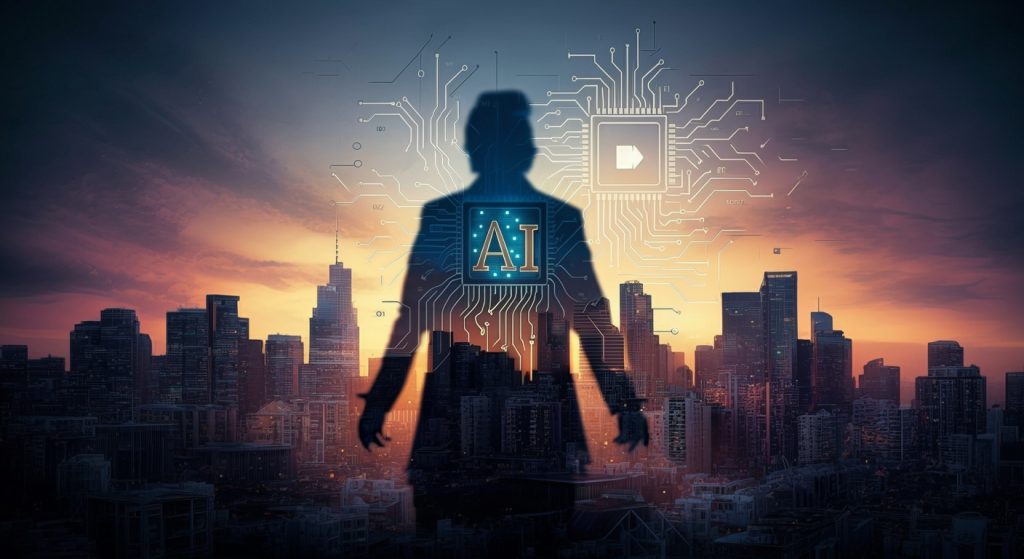
(Shutterstock AI)
The White House held a private dinner last Thursday with some of the most powerful people in artificial intelligence. Executives from Meta, Microsoft, Google, Apple, OpenAI, AMD, Oracle, and others were invited. These are the companies building the core systems that power today’s AI. This includes everything from GPU hardware and model-hosting platforms to developer tools and foundation models like ChatGPT and Gemini.
The event was officially described as a gathering of innovators and a celebration of American AI leadership. However, in reality, it was also a show of support. Tech leaders signaled their alignment with the administration’s AI priorities, and in return, positioned themselves for access and influence in the months ahead.
Meta CEO Mark Zuckerberg was seated close to President Trump during the dinner, a detail that stood out given their history. During his last term, Trump accused Zuckerberg of interfering in the election and said he might “spend the rest of his life in prison.” That tension was not on display during the event, and the two seemed to have put it behind them. Zuckerberg sat at the center of a guest list that included other CEOs working closely with the administration on infrastructure and national AI strategy.
Two key individuals were missing. Elon Musk did not attend, saying he would send a representative instead. The move was not surprising given recent tensions between him and Trump. Musk posted on X that he had been invited but could not make it, and that someone would go in his place. A White House official later confirmed the invitation had been extended.
 Nvidia CEO Jensen Huang was also absent. His company is central to the AI boom and has been in direct talks with the government on supply chain and policy issues. No reason was given for his absence, but it was noticeable in a room filled with the people shaping the future of AI.
Nvidia CEO Jensen Huang was also absent. His company is central to the AI boom and has been in direct talks with the government on supply chain and policy issues. No reason was given for his absence, but it was noticeable in a room filled with the people shaping the future of AI.
OpenAI CEO Sam Altman was full of praise for the President, and shared, “Thank you for being such a pro-business, pro-innovation President. It’s a very refreshing change. We’re very excited to see what you’re doing to make our companies and our entire country so successful.”
“The investment that’s happening here, the ability to get the power of the industry back in the United States, is going to set us up for a long period of great success leading the world — and I don’t think that would be happening without your leadership.”
Sundar Pichai, CEO of Alphabet, Inc. and Google, also praised the administration’s efforts during the event. “The AI moment is one of the most transformative moments any of us have ever seen or will see in our lifetimes, so making sure the U.S. is at the forefront — and I think that your Administration is investing a lot already. The AI Action Plan, under your leadership, I think is a great start, and we look forward to working together — and thanks for your leadership.”
We know that AI is no longer just a tech issue. It is a geopolitical asset and an economic driver. It’s also a regulatory minefield. With Trump back in the White House, many in the tech sector are adjusting their posture. Companies that depend on federal contracts, export licenses, or access to critical AI hardware have strong incentives to align themselves with the current administration’s goals.
Whether it’s navigating chip allocations, influencing workforce development, or securing favorable treatment under AI safety frameworks, access to power now plays a central role in shaping outcomes.
The White House had more on its schedule than just a dinner. Earlier that day, First Lady Melania Trump hosted a session focused on bringing AI into education. The meeting included tech executives and education leaders, all looking at how to better prepare students for a world shaped by artificial intelligence.

(VideoFlow/Shutterstock)
That’s when the Presidential AI Challenge was announced. It’s part of a national push to get more AI tools into schools and help teachers feel confident using them. Students will be encouraged to explore how AI works by using it directly, while educators get support through training and resources.
Several major companies are backing the effort. Microsoft offered free access to Copilot for college students and announced prize grants for teachers leading in this space. LinkedIn is providing free courses and certifications to help more people build skills that connect to today’s job market.
In the weeks leading up to the dinner, the Trump administration made a series of moves that signaled it wants to be more than a regulator. From AI education programs to high-level decisions on chip exports, Trump has shown a personal interest in how the industry is evolving.
The Trump administration recently gave Nvidia the green light to restart limited chip sales to China, but only under a revenue-sharing arrangement with the U.S. government. It’s a clear sign that the White House isn’t just watching the AI economy — it wants a hand in steering it.
The push for more control in this space marks a new phase in the relationship between government and the tech sector. For AI companies, that shifts the entire equation. It is no longer just about compliance or lobbying. It is about staying close to where the decisions are made. Being seen at the table is now a strategic move, and companies may not want to risk being left out.

